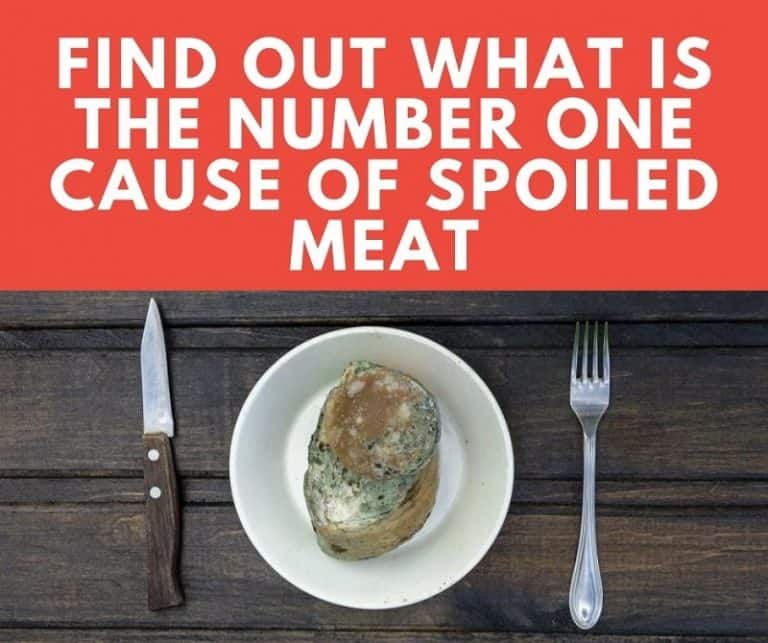When was the last time you reached into your fridge and unearthed a piece of meat that looked less than appetizing? Spoiled meat is not only unappealing, but it also poses serious health risks. So, what is the number one cause of meat spoilage? While there might be several suspects in the lineup, one culprit consistently stands out: bacteria. In this exploration into the underbelly of meat preservation, we’ll journey through the various factors that contribute to spoilage, focusing primarily on the role of bacteria, alongside other environmental influences.
First, it is essential to understand what we mean by “spoilage.” Spoiled meat typically exhibits unpleasant odors, discoloration, and a slimy texture. These indicators are a result of microbial activity, during which bacteria, yeasts, and molds consume the meat’s nutrients, producing byproducts that affect its quality. Among these microorganisms, bacteria are the primary offenders.
Many types of bacteria inhabit our kitchens. However, not all are harmful. In fact, certain bacteria are intentionally harnessed in the production of fermented foods. Yet, when it comes to meat, the ones to watch out for include Salmonella, E. coli, and Listeria monocytogenes. These pathogens not only spoil the meat but can also lead to foodborne illnesses if ingested. Understanding how these bacteria proliferate is vital for anyone aiming to maintain meat quality.
At the epicenter of meat spoilage lies the concept of temperature. The “danger zone,” a term used within food safety practices, refers to the temperature range between 40°F (4°C) and 140°F (60°C). Within this range, bacteria thrive, multiplying at an alarming rate. You might wonder if a few minutes left out on the counter could harm you. In reality, meat that lingers in this zone for over two hours should be considered a risky endeavor. Thus, proper refrigeration—maintained at or below 40°F—is paramount in the fight against spoilage.
Furthermore, how meat is handled plays a critical role in its preservation. Cross-contamination is a significant player in bacterial growth. Whether transferring raw meat from one surface to another or using the same utensils, the potential for bacteria to hitch a ride is ever-present. It’s crucial to use separate cutting boards and utensils for raw meat to thwart unwanted microbial guests from invading your food.
Another factor impacting meat freshness is its exposure to oxygen. Aerobic bacteria require oxygen to thrive, making your meat susceptible to spoilage during extended exposure. Even when meat is refrigerated, improper storage can allow air to interact with the surface, accelerating the breakdown process. Vacuum sealing meat can help eliminate this issue, creating an airtight environment that inhibits bacterial growth and preserving the meat’s quality for extended periods.
In addition to bacteria, consider the role of enzymes in meat spoilage. These natural catalysts break down proteins and fats, contributing to changes in flavor and texture. While most of us think of bacteria as the primary threat, enzymes quietly undermine the integrity of meat. Cooking meat can inactivate these enzymes; yet, they remain a concern before cooking, especially if meat is not stored or handled correctly.
Now, let’s touch upon the often-overlooked impact of moisture. High humidity levels can create a breeding ground for mold and bacteria. While it’s essential to keep meat moist during cooking, excess moisture prior to cooking can lead to spoilage. If you’ve ever noticed meat packaged in a pool of liquid, it’s a sign that moisture accumulation may have led to bacterial growth. Meat should be stored in a dry environment, ideally wrapped tightly to keep excess moisture at bay.
Of course, one cannot discuss spoilage without mentioning expiration dates. Proper labeling plays a crucial role in consumer safety. Best before dates indicate the peak freshness of the product; however, they are not definitive. The appearance, smell, and texture of meat should guide your final judgment. Consuming meat after its expiration date may tempt fate, so proceed with caution.
In our quest to keep meat fresh, it becomes evident that bacteria pose the most significant challenge. However, the war against spoilage is not lost; a multifaceted approach ensures success. Start by understanding the behavior of bacteria, maintain lower temperatures, handle meat with clean utensils, minimize exposure to air, and keep an eye on moisture levels. And remember to trust your senses when it comes to determining freshness.
As you reflect on the number one cause of spoiled meat, consider this: could you become a guardian of your kitchen by adopting better practices? If so, you’ll not only extend the life of your meat but also safeguard the health of those who enjoy it. After all, a little awareness can go a long way in preventing an unwanted culinary disaster.
